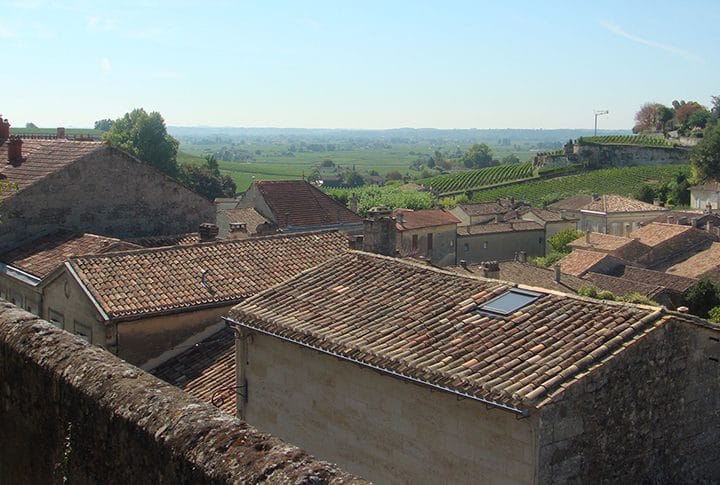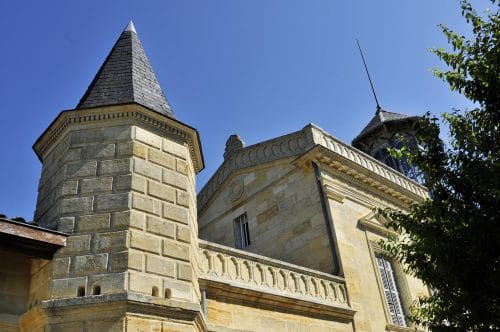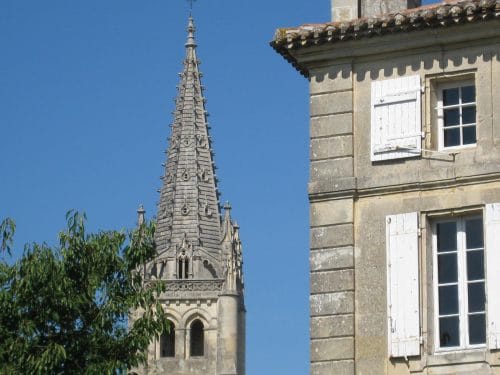Saint Emilion Vineyards. There is no dispute that the earliest Saint Emilion vineyards date back to the Roman occupation of the region about 2,000 years ago that started with their conquest of Aquitaine in the year BC 56. There is evidence of Saint Emilion vineyards in the 2nd century and the owners of Chateau Haut Sarpe will tell you that the name of their classified Saint Emilion chateau is a reference to the sickles used to clear the hill tops around the village. The Roman Emperor Valerius Probus demanded that the hillsides of Saint Emilion be “essarper” removing all of the brush and vegetation on the upper slopes so that Saint Emilion vineyards would be ‘closest to the sun.’
According to the Saint Emilion Tourist web site there are 200 km of caves and underground galleries beneath the village of Saint Emilion. These are not natural but rather have been excavated over about 1000 years up to the 19th century. This quarrying provided stone for the construction of buildings in Saint Emilion and the surrounding region. As a fortuitous by product of this local need for stone, the tunnels and caves then provided the perfect environment for wine storage in the humid dark cellars with a constant temperature of about 13 to14 degrees Centigrade year round. When you visit the famous cellars of Chateau Le Manoir or eat in the restaurant “Lard et Bouchon” on Rue Guadet you will get a sense of the evolution of this relationship between Saint Emilion the village, the stone and its wines. The largest cave and crowning tourist attraction is of course the Saint Emilion monolithic church that is carved out of the rock under the massive limestone outcrop in the centre of Saint Emilion.
According to www.vins-saint-emilion.com “Saint Emilion himself is not a mythical figure; his cult is well-established in Brittany and, of course, in Saint Emilion. The earliest surviving account of the life of this hermit saint, dating from the 12th century, tells of his plans to make the pilgrimage to Santiago de Compostela. He apparently spent time in Saujon before settling in “Ascumbas”, the early medieval name for Saint-Emilion, where he carved a place of worship directly into the rocky hillside and established a small religious community. After his death on January 16th 787, his disciples expanded Emilion’s original rock-hewn sanctuary to create the monolithic church which is still in use today. And so the town of Saint-Emilion was born…”
Saint Emilion vineyards as we know them today began to take a more organized shape under the guidance of the Saint Emilion “Jurade” who were given autonomy in the 12th century under the “Charte de Falaise” signed by Jean-Sans-Terre, the son of Eleanor of Aquitaine. The territory was then extended to eight further parishes in 1289 under Edward 1st to a total of nine communes that are the same nine communes that form the AOC delimited area of Saint Emilion today. However it was in the late 19th century and early 20th century that final steps of the AOC Saint Emilion evolution were completed. The passing of an Act on 21st March 1884 allowing the wine farmers to create their own professional trade unions, gave Saint-Emilion winegrowers new ways in which to promote and protect their wines – this was the first of its kind in France. According to the Conseil des vins de Saint-Emilion www.vins-saint-emilion.com “the idea of the union was to encourage solidarity between winemakers in terms of technical guidance, promotion, image and quality control of the region’s wines. What was born in 1884 evolved into the creation of the Institut National des Appellations d’Origine (AOC) which was established in 1936 and defined the sphere of production for AOC Saint-Emilion, establishing criteria for yield, planting density, alcohol content etc.
Today this wine growing area covers about 5,400 hectares and in 1999, for the first time ever, crowning its distinguished history, its vineyard landscape was acknowledged as worthy of being listing as a World Heritage Site.
Written by Michael Baynes


